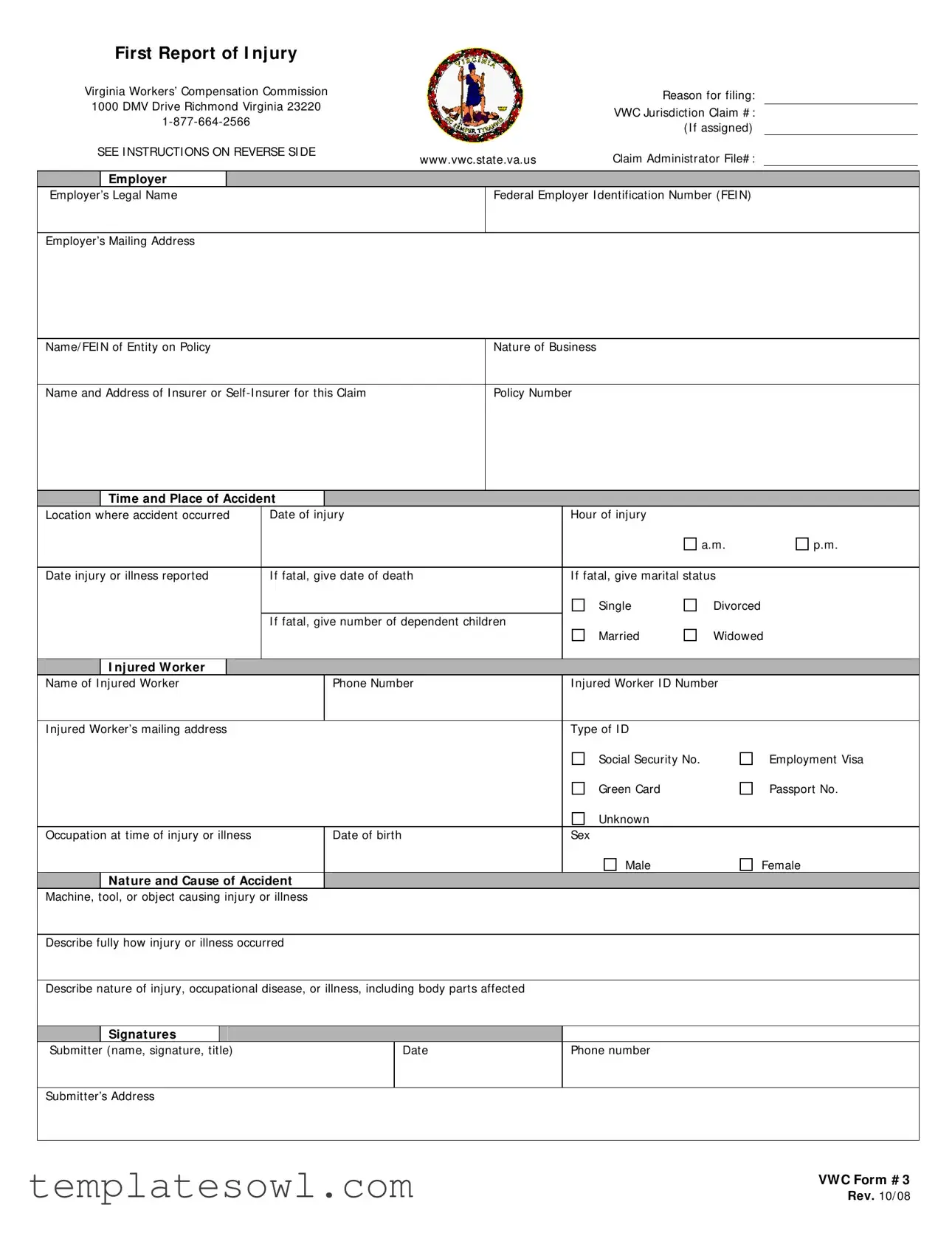First Report of I nj ury
Filing I nst ruct ions
The Virginia Workers’ Compensation Act requires that ALL injuries occurring in the course of employment be reported to the Commission pursuant to Va. Code §65.2-900.
Employer
The employer is responsible for accurately completing all sections of this form when an employee is injured. I t should be typed or legibly printed, signed, and dated by the preparer. Send the original form to the claim administrator for the insurance company who provided insurance coverage on the date of the occurrence. The claim administrator will report this information to the Commission.
Contact your workers’ compensation insurance provider for additional information.
Claim Administ rat or
Claim administrators who are EDI enabled will use the information contained on the paper form and submit electronic data to the Commission.
Claim administrators who are NOT EDI enabled must immediately file the completed form with the Commission. Please note: EDI is mandatory no later than June 30, 2009, after which time paper reports will no longer be accepted. Until you are in EDI production, mail the completed form to the Virginia Workers’ Compensation Commission, 1000 DMV Drive, Richmond, VA 23220. At the top of the form, use a numerical code (1-7) to indicate the reason for filing the form for accidents meeting one of the filing criterion.* I f none of the criteria apply, you must still report the accident, but may use either Form 45A or this form to do so. (Leave “reason for filing” blank in such a case.)
For questions or assistance in completing the form, please contact the Commission toll-free at 877-664- 2566.
*Criteria for filing are: (1) lost time exceeds seven days; (2) medical expenses exceed $1,000.00; (3) compensability is denied; (4) issues are disputed; (5) accident resulted in death; (6) permanent disability or disfigurement may be involved; and (7) a specific request is made by the Virginia Workers’ Compensation Commission.

